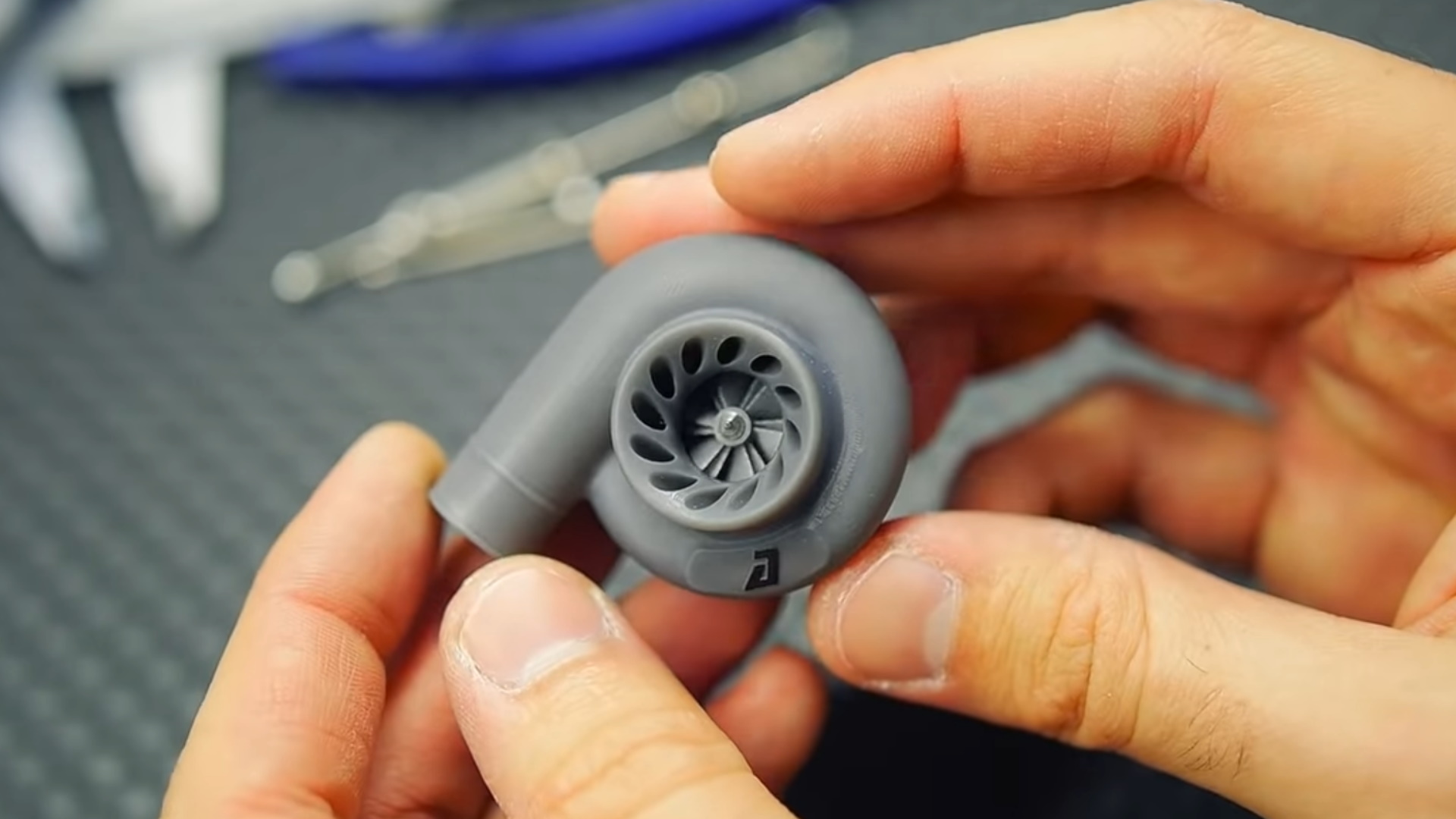

3D printing is nothing new these days, but making functional pieces of hardware as opposed to just busts of your favorite president is a different story. Even amateur engineering is a lesson in tolerances and precision, something that Russian YouTuber Alpha Mods clearly understands. We’ve previously covered the tiny V-twin engine he bought and got running like clockwork, however, his latest project has a bit more engineering involved. Using a resin-based 3D printer and a slew of patience, he created a very effective, very tiny centrifugal supercharger that runs off the power of an equally pint-sized combustion engine.
The entire build is done extremely carefully. The compressor wheel of the supercharger is just 20.6 millimeters or about three-quarters of an inch, but thanks to the capabilities of his printer, laudable attention to detail, and the smallest ball bearings you’ve ever seen, it boosts just like a big centrifugal blower when everything is assembled.
The project starts with the printer doing its thing, followed by a bit of post-processing. Parts from an SLA-style resin printer must be cleaned of excess liquid and cured in the sun or with ultraviolet light before they’re ready to use, and Alpha Mods had support material to remove as well. He goes above and beyond the call when it comes to removing the support, going as far as using an X-Acto knife to scrape off tiny nodules of the leftover material under strong digital magnification. From there, he machines some of the prints on a lathe to ensure they’re round and then presses in the necessary bearings with similar exacting precision.

After methodically testing the efficiency of the two impellers he designed, he installs the higher-performing unit into the housing of the compressor. The shaft the wheel sits on is then likewise machined down to the right size, and the entire thing is joined together using special glue that cures when it’s exposed to UV rays. No fasteners here, that would ruin the whole aesthetic!
The completed tiny supercharger, complete in all its glory, is then mated to an appropriately tiny combustion engine via a belt and a few pulleys. The pulley on the supercharger is considerably smaller than that on the engine, which increases the speed of the impeller as compared to the rotational speed of the motor. The same sort of thing is sometimes done on real centrifugal superchargers, although often there’s some manner of gear reduction involved in the unit itself as opposed to a massive belt reduction like we see here. In drag racing applications, for instance, these types of superchargers are often driven directly off the crankshaft and reduced with a geartrain, not with a belt of any sort.



In any case, even at idle speeds, the pint-sized blower is moving a lot of air for its size. Alpha Mods doesn’t go as far as to test the cubic feet per minute of the device, but clearly, from things he places in front of it, it’s really working well. Imagine what would happen with even more engine speed.
Alpha Mods has previously tested a roots-type blower as well, which works at lower rotational speeds but is not as efficient as a good centrifugal compressor. In the end, it seems like we’ll get to see both tested on a remote-controlled car powered by a small engine. Needless to say, I’m very excited to see this whole project come together. Attention to detail and careful engineering, even at an amateur level, can really add up to some impressive results.
Got a tip or question for the author? You can reach them here: peter@thedrive.com